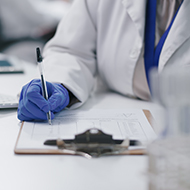Scientist creates saddle-map to reduce horse back pain
"A poor interface between a saddle and a horse's back can lead to severe tissue damage in horses." - Dr Cheney
Dr Jorn Cheney, a researcher of animal locomotion at the University of Southampton has been able to use a new method for scanning moving horses to produce an enhanced saddle-map that can reduce the chances of back pain or injury for horses.
The map highlights the most and least mobile areas of a horse’s back while walking and trotting, and may help to improve saddle design and fitting methods in the future.
Dr Cheney and his team used an array of cameras to film horses while they were walking and trotting in order to measure the change in shape of the animals’ backs. This information was used to track the movement of the limbs and reconstruct the saddle region as it morphed throughout the stride.
Dr Cheney said: “We were surprised to see that the shape of the standing animal was substantially different from the stride-averaged shape of the moving animal.
“We expected a difference, just not to the extent that we saw.”
The results revealed that repeated application of high pressure and soft tissue movement in the most mobile areas can lead to pain and tissue damage. It was found that the least mobile areas of a horse’s back are the most suitable for distributing pressure.
The current method for fitting saddles to horses is done on standing animals, which doesn’t take account for how the saddle will alter its position as the horse moves.
Dr Cheney continued: “A poor interface between a saddle and a horse’s back can lead to severe tissue damage in horses, even the wastage and loss of whole muscles in the back."
Work is now being undertaken into new design and fitting guidance for saddlers. Dr Cheney is working with master saddlers to ensure that the new fitting guidance is in line with professional approaches to saddling and industry philosophy.



 BSAVA is to partner with BVA Live (11-12 June 2026) to champion clinical research.
BSAVA is to partner with BVA Live (11-12 June 2026) to champion clinical research.